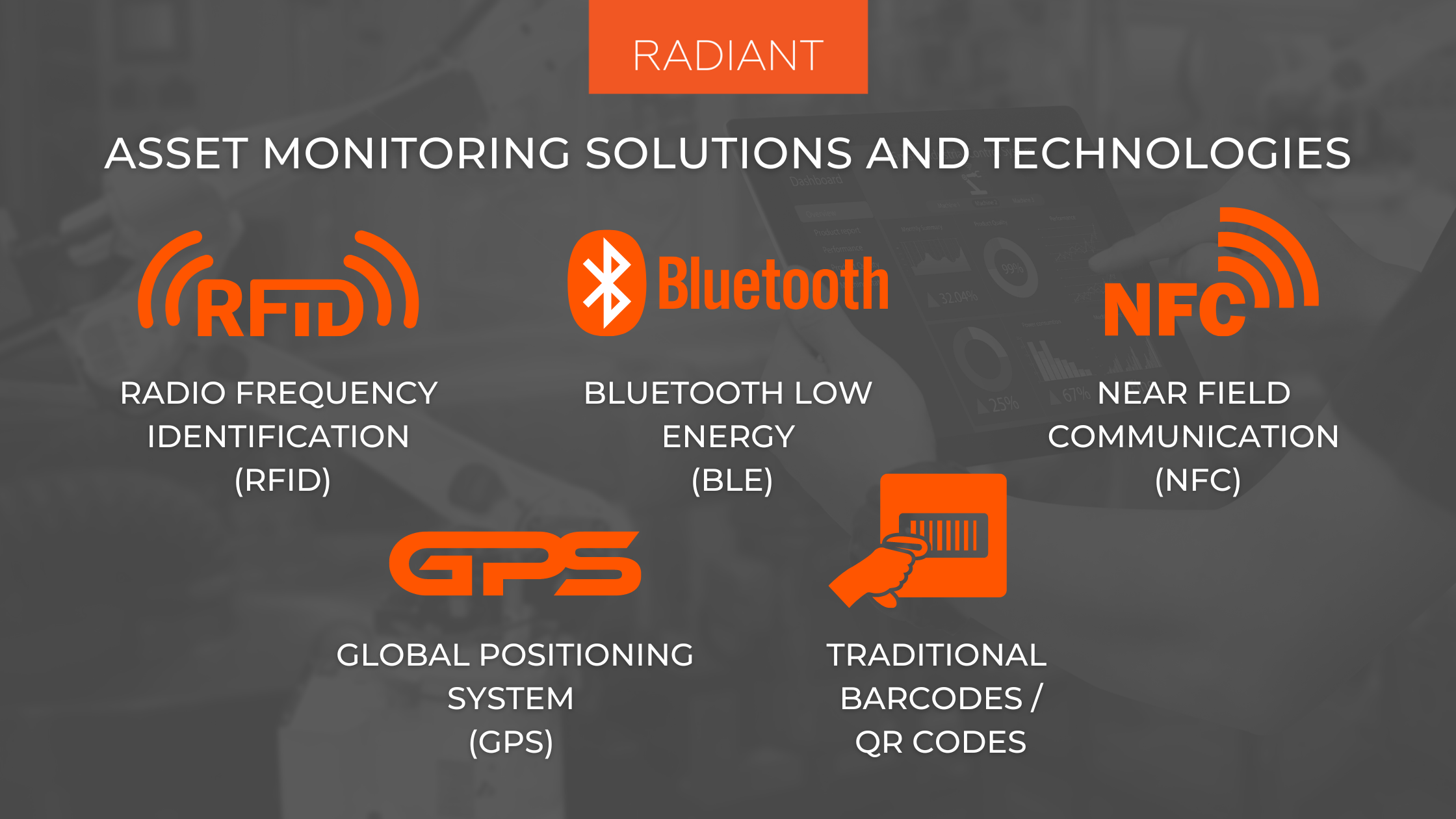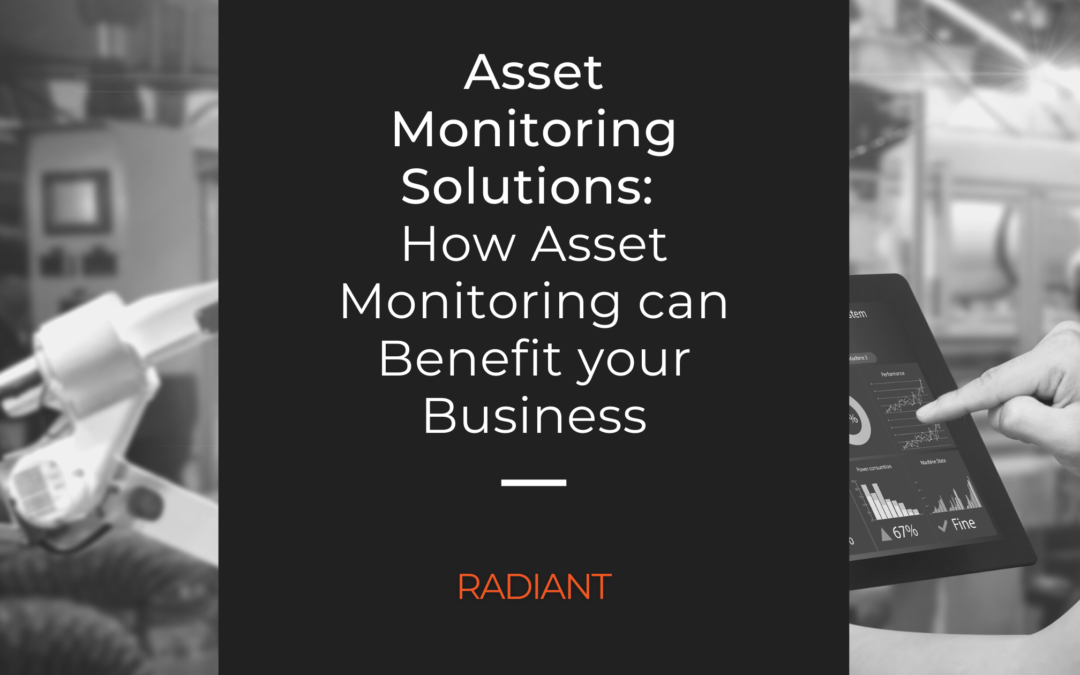There’s no doubt that businesses need to keep a close eye on their assets. Whether it’s ensuring that valuable equipment is accounted for or preventing theft as assets move through the supply chain, asset monitoring is essential for any business.
But what are the best ways to monitor your assets? And how can asset management benefit your business? This blog post will explore asset monitoring solutions and how they can help your business succeed. Read on to learn more.
What is Asset Monitoring?
Asset monitoring is the process of tracking and managing physical assets, such as equipment, tools, and vehicles. Asset monitoring helps organizations keep track of their asset inventory, identify real-time asset locations, and monitor asset conditions.
Additionally, asset management can help to prevent asset loss and improve asset utilization. By tracking assets throughout their lifecycle, organizations can minimize the cost of ownership, optimize asset value, and ensure regulatory compliance.
There are a variety of asset monitoring solutions available on the market, each designed to meet the specific needs of an organization. However, all asset monitoring solutions share a common goal: to help organizations better manage their physical assets.
How do Asset Monitoring Solutions Work?
Asset monitoring solutions are designed to help businesses track and manage their fixed assets. There are a variety of asset monitoring solutions available, but they all typically work in a similar way.
First, businesses will install sensors on their assets. These sensors can track a variety of information, including location, temperature, and usage. The data from the sensors is then transmitted to a central asset management system, often cloud-based, which allows businesses to manage assets remotely via mobile app.
This system gives businesses the ability to track their assets in real-time and make decisions about how to best utilize them. For example, this asset data can be used to improve asset management decisions, such as when to repair or replace an asset. Additionally, asset monitoring can help to improve safety and security by providing visibility into the status of critical assets.
Asset monitoring solutions provide a wealth of benefits for businesses, helping them to save time and money while ensuring that their assets are being used optimally.
The Benefits of Asset Monitoring Solutions for Businesses
There are many benefits of asset management, which is why smart asset monitoring solutions are gaining popularity. Here are some key benefits of asset monitoring solutions:
– Improved Asset Utilization: By understanding how your assets are being used, you can make changes to optimize their use and reduce wasted resources.
– Reduce Equipment Downtime: Asset monitoring solutions allow for businesses to quickly identify issues with equipment and machines before they cause major disruption or require costly repairs.
– Optimize Maintenance Schedules: Asset monitoring can enable predictive maintenance, which can help to avoid unexpected repairs or replacements while also increasing efficiency.
– Enhance Safety: Asset management can improve safety by helping to identify potential hazards before they occur.
– Ensure Compliance: Asset monitoring solutions can help to facilitate compliance with regulatory requirements by helping to maintain an accurate asset record.
– Proactive Decision Making: Asset monitoring solutions can help to improve the overall performance of an organization by providing real-time visibility into asset performance, allowing for proactive decision making.
These are just a few of the many benefits of asset monitoring systems. Asset monitoring solutions offer a concise way to track all of an organization’s assets, and they provide valuable insights that can help to improve the bottom line. When it comes to managing assets, asset monitoring solutions are becoming increasingly indispensable.
Types of Asset Monitoring Solutions and Technologies

Organizations use asset monitoring solutions to track and manage equipment, inventory, and other physical assets. Many different types of asset monitoring solutions are available, each with its own advantages and disadvantages.
- RFID (Radio Frequency Identification) is a popular asset management technology that uses RFID tags to track assets.
- RFID Tags Benefit: RFID tags can be read from long distances, making them ideal for tracking large or high-value assets.
- RFID Tags Con: However, RFID tags can be expensive to implement, and they require special infrastructure such as RFID readers and antennas.
- GPS (Global Positioning System) is another asset management solution that can be used to track both people and assets.
- Asset Tracking with GPS Benefit: GPS tracking devices use satellite signals to determine their location, so they can be used for both indoor and outdoor location-based asset tracking.
- Asset Tracking with GPS Con: GPS devices are more accurate than RFID tags, but they require a clear line of sight to the satellite in order to work properly.
- BLE (Bluetooth Low Energy) is a newer technology used in asset monitoring solutions.
- BLE Tags Benefits: BLE tags are smaller and less expensive than RFID tags, making them ideal for tracking small assets. Additionally, many smart devices, such as phones and tablets, are BLE-enabled, which means they can be leveraged by BLE asset monitoring solutions. This can significantly cut back on the cost of deployment and scalability, given that no additional infrastructure may be required.
- BLE Tags Con: However, BLE tags have a shorter range than RFID tags, so they may not be suitable for all applications.
- Barcodes and more recently, QR codes, are another common asset management technology that uses optical scanning to track assets.
- Barcode Benefits for Asset Tracking: Barcodes are inexpensive to implement, and they can be read from long distances.
- Barcode Cons for Asset Tracking: However, barcodes require special infrastructure such as scanners or readers, and they can be damaged or obscured if not properly protected. Additionally, barcodes must be printed on each asset, which can be time-consuming and expensive.
- NFC (Near Field Communication) is a short-range asset management solution that uses electromagnetic fields to communicate between devices.
- NFC Tags Pro: NFC tags can be read from very close range, making them ideal for tracking small assets.
- NFC Tags Cons: However, NFC tags have a shorter range than other asset tracking solutions, so they may not be suitable for all applications. Additionally, NFC asset monitoring solutions are similar to BLE asset monitoring in terms of cost and range, but NFC asset monitoring solutions require special infrastructure in order to work properly.
Each of these technologies has its own advantages and disadvantages, so it’s important to choose the right one for your needs.
How to Choose an Asset Monitoring Solution that’s Right for your Business
When it comes to asset management, there is no one-size-fits-all solution. The right asset monitoring solution for your business will depend on a number of factors, including the type and size of your business, the assets you need to monitor, and your budget. To help you choose the right asset monitoring solution for your business, here are a few things to keep in mind:
First, consider the type of asset you need to monitor. Are you looking to monitor inventory levels, for example, or track the location of assets in real-time? Knowing the type of asset you need to monitor will help narrow down your options.
Next, consider the size of your business. Asset monitoring solutions can range from simple tracking systems designed for small businesses to complex enterprise-level solutions. The size of your business will dictate the type of solution you need.
Finally, consider your budget. Asset monitoring solutions can vary widely in price, so it’s important to find a solution that fits within your budget. There are a number of cost-effective asset monitoring solutions on the market, so don’t be afraid to shop around.
By keeping these factors in mind, you can be sure to find an asset monitoring solution that’s high quality and right for your business.
How to Get Started with an Asset Monitoring Solution
Asset monitoring solutions are becoming an increasingly important tool for businesses of all sizes, with the IoT-based asset tracking and monitoring market projected to grow from USD 3.9 billion in 2022 to USD 6.6 billion by 2027. By understanding what asset monitoring solutions are, how they work, and the benefits they provide, business owners can make more informed decisions about which solution is right for them.
At Radiant, we provide a variety of asset management solutions that cater to different types of businesses and industries. We also have a team of experts who can help you choose the IoT solution that’s best for you. If you’re interested in learning more about our asset monitoring solutions, please explore our website and request your demo below.
Last Updated on September 13, 2022 by Radiant

